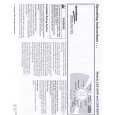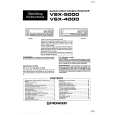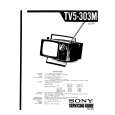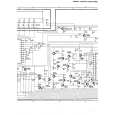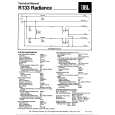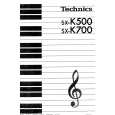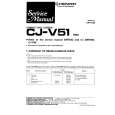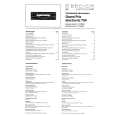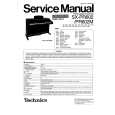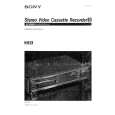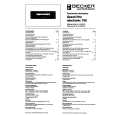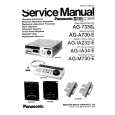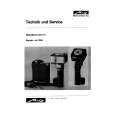|
|
|
Kategorie
|
|
Informacje
|
|
Polecamy
|
|
|
 |
|
|
Dla tego produktu nie napisano jeszcze recenzji!
Playing and Editing Programs
�Resonance� speci�es the resonance level. This boosts the overtones in the region of the speci�ed �Frequency,� giving the sound a distinctive character.
� �Int. to A� and �Int. to B� adjust the effect that keyboard tracking will have on �lters A and B. For more details, see �4�2a: Keyboard Track� (�PG p.17).
Filter EG
The Filter EG is a multi-stage envelope, which you can use to modulate the �lter (naturally!) as well as other Program parameters. The EG itself is set up on the Filter page; the way that it affects the �lters is controlled by the parameters described below, on the Filter Mod page: The �Int. to A� and �Int. to B� settings control the basic amount of EG modulation for �lter frequencies A and B, respectively, before other modulation. The �Vel to A� and �Vel to B� settings let you use velocity to scale the amount of EG modulation. The �AMS� setting selects a AMS modulation source to scale the amount of the Filter EG applied to Filters A and B. The two �lters share a single AMS source, with separate intensity settings.
If you�ve selected Low Pass & High Pass as the �lter type, you can use the Filter A parameters to adjust the low pass �lter and the Filter B parameters to adjust the high pass �lter. Overtones above the Filter A �Frequency� will be diminished, making the sound more mellow (darker). Overtones below the Filter B �Frequency� will be diminished, decreasing the low-range and making the sound thinner.
Modulating the �lters
You can modulate the �lter cutoff frequency using the Filter EG, the LFOs, keyboard tracking, and other built-in and MIDI controllers. This is a great way to add a rich variety of tonal change to the sound.
Keyboard Track
Most acoustic instruments get brighter as you play higher pitches. At its most basic, keyboard tracking re-creates this effect by increasing the cutoff frequency of a lowpass �lter as you play higher on the keyboard. Usually, some amount of key tracking is necessary in order to make the timbre consistent across the entire range. � When Ramp �Low� is set to a positive (+) value, the cutoff frequency will rise as you play lower on the keyboard, making the sound brighter. When set to a negative (�) value, the cutoff frequency will fall as you play lower on the keyboard, making the sound darker. � When Ramp �High� is set to a positive (+) value, the cutoff frequency will rise as you play higher on the keyboard, making the sound brighter. When set to a negative (�) value, the cutoff frequency will fall as you play higher on the keyboard, making the sound darker.
LFO modulation
You can modulate the �lter via LFO1 and LFO2. Among other applications, LFO modulation of the �lter can produce the classic �auto-wah� effect. The Ed�Filter1, LFO Mod (or Ed�Filter2) page lets you set up the following parameters separately for each LFO: �Intensity to A� and �Intensity to B� specify how much the LFO changes the tone. �JS-Y Int. to A� and �JS-Y Int. to B� specify the depth of the wah effect created by the LFO when you move the joystick toward yourself or when CC#2 is received. The �AMS� setting selects a AMS modulation source to scale the amount of the LFO applied to Filters A and B. The two �lters share a single AMS source, with separate intensity settings. For example if you set Knob B Assign �Knob 1-B� to Knob Mod. 1 (CC#17), and set �AMS� to Knob M1#17, you can turn the REALTIME CONTROLS B-mode knob [1] to apply an auto wah effect.
54
|
|
 |
> |
|
